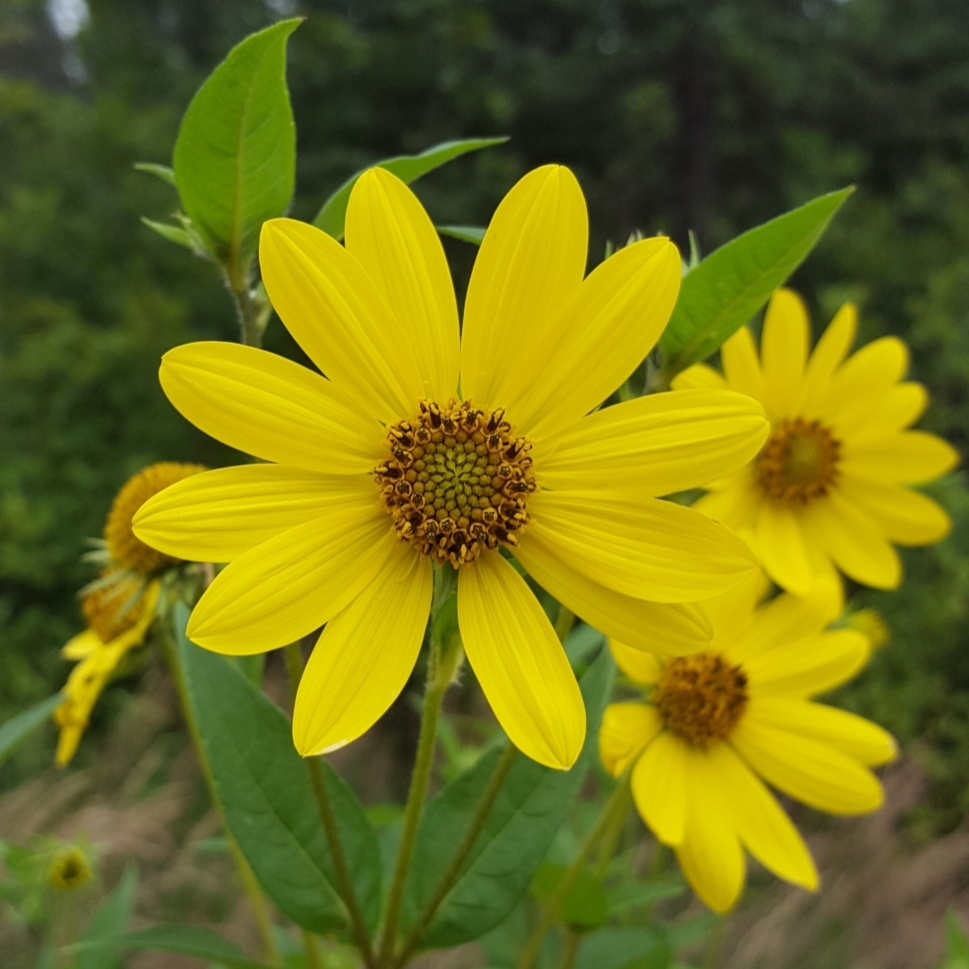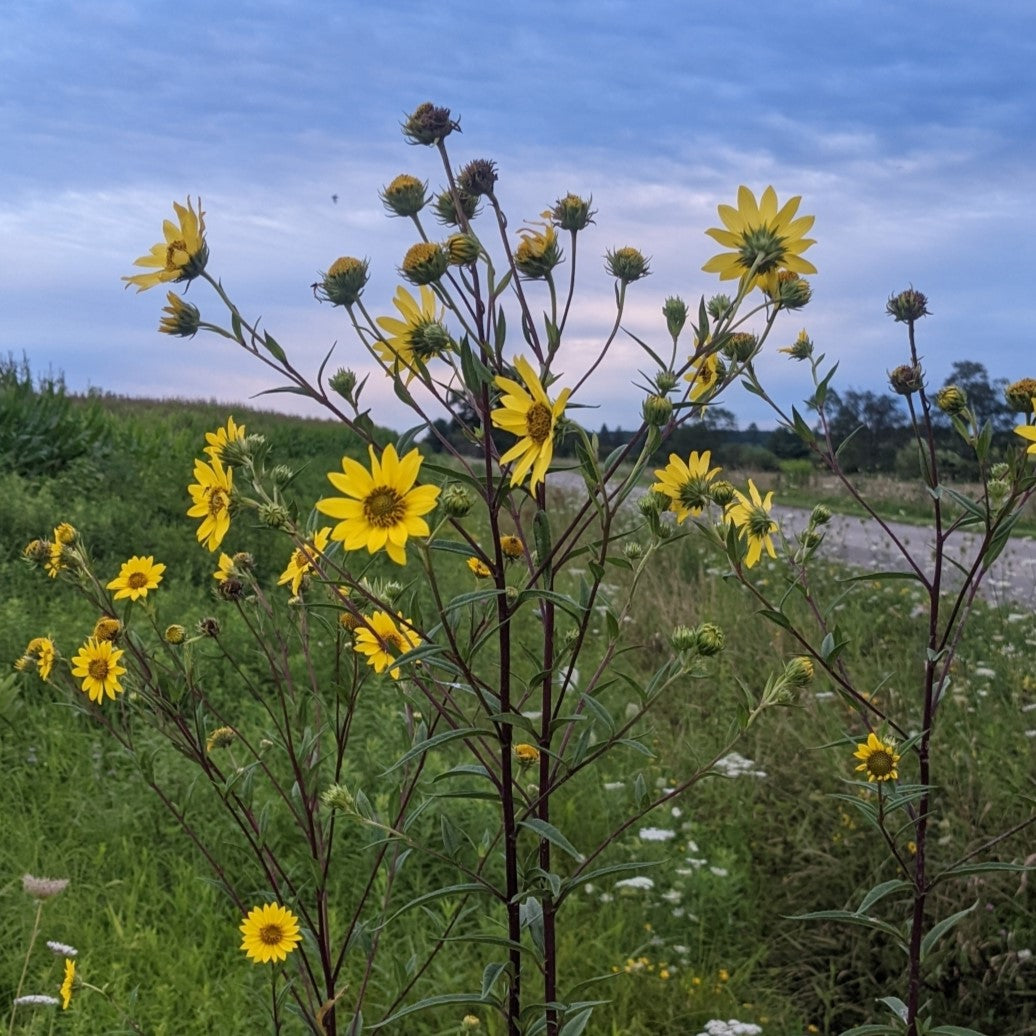Giant sunflower
Helianthus giganteus
Helianthus giganteus
Couldn't load pickup availability
Sun/shade: Full sun to part shade
Soil moisture: Medium to wet
Height: 8'
Spread: 2'
Flowering period: September
Standing in a patch of giant sunflowers feels a bit like standing in a forest rather than a meadow. Growing up to 10 feet tall, these majestic beauties bring summer to a shining conclusion, with big yellow flowerheads that last through the month of September. Sunflowers evolved exclusively in North America and are among the most important plants for native bees. Found in NE Ohio meadows, wet meadows, and the margins of water bodies, giant sunflower grows best in moderately wet to average soils and full sunlight.
When gardening with giant sunflower, it is best to place the plant in a large garden bed to accommodate its immense height and tendency to spread via rhizomes. It is also important to plant giant sunflower in the company of robust neighbors that will form colonies that will resist encroachment. Some examples include late boneset, short-toothed mountain mint, wrinkleleaf goldenrod, swamp milkweed, and ironweed. Giant sunflower can also be planted along with tall grasses, like big bluestem, switchgrass, and Indian grass. The grasses will both restrain giant sunflower’s spread and offer the plant physical support, keeping it from leaning. Another option to keep giant sunflower from leaning is to trim it to half its height in June. This will cause the mature plant to be several feet shorter with a more branching form.
In terms of wildlife value, the sunflower genus, Helianthus, supports more pollen specialist bees than any other genus of plants in the eastern US. Pollen specialists require the pollen from a select group of plants – in this case sunflowers – for feeding their larvae. Giant sunflowers also provide nectar to migrating monarch butterflies, and the plant’s seed is relished by birds. After it is finished blooming, giant sunflower thus transforms into a natural bird feeder.
Photo 1 © Norma Malinowski, CC BY 4.0. Photo 2 © Alina Martin , CC BY 4.0.



